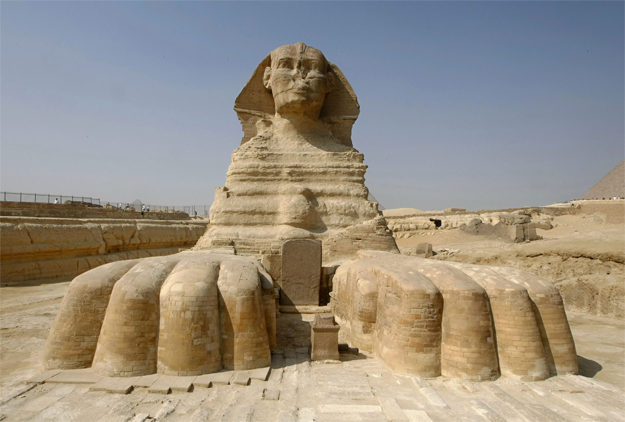
According to a study published in the Physical Review Letters journals, adding a small amount of water to sand reduces the sliding friction for a sledge which could be loaded with heavy statues or stones for pyramids.
Just like in building sand castles, when water is added to sand, the grains stick to each other and keep the castle in its shape. The same principle applies in transportation over sand bodies – like the Sahara desert: The right amount of water binds sand grains and reduces the sliding friction of any object moving over it.
An international team led by Daniel Bonn from the University of Amsterdam tested the sliding friction of dry and wet sand by pulling a weighted sledge across the surface in a tray.
With the dry sand, a stack would form in front of the sledge, increasing friction. As they added water, both, the force required pulling the sledge and the amount of friction, decreased.
With the sand now more stiff, the stack got smaller and smaller until there was no obstacle forming in front of the sledge.
Their experiments revealed that the required pulling force decreased proportional to the stiffness of the sand.
With the right amount of water, wet desert sand is about twice as stiff as dry sand, allowing the sledge to slide far more hassle free. “I was very surprised by the amount the pulling force could be reduced -- by as much as 50 per cent -- meaning that the Egyptians needed only half the men to pull over wet sand as compared to dry,” Bonn told the Washington Post.
However, the balance of water used is critical. Too much water is not good. Water saturation can lead to a decrease in sand stiffness, and instead become a bog which can increase drag.
"If you use dry sand, it won't work as well, but if the sand is too wet, it won't work either," Bonn told Live Science. "There's an optimum stiffness."
The ideal amount of water falls between two and five per cent of the volume of sand.

The answer had been in the open all along, but no one ever saw it as such. In a wall painting from the tomb of Djehutihotep, workers are seen using same technique, by pouring water in front of a sledge that is carrying a gigantic statue. The sledge was larger than a normal wooden plank with upturned corners.
“Egyptologists had been interpreting the water as part of a purification ritual," Bonn says, "and had never sought of a scientific explanation.”
This story originally appeared on the Washington Post

















COMMENTS (11)
Comments are moderated and generally will be posted if they are on-topic and not abusive.
For more information, please see our Comments FAQ